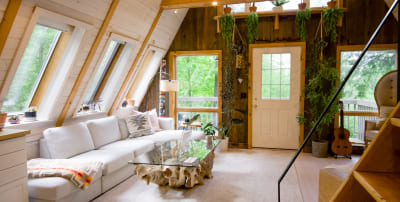
The Rise of Suburban Living in
Pakistan: Affordable Homes and New Investment Hubs
Suburban real estate in Pakistan
refers to housing and property located on the outskirts of major cities. These
areas are usually connected to the city through highways and public transport
but provide a quieter and less congested lifestyle compared to the city center.
Suburban living is becoming popular because people want more space, cleaner
air, and affordable property options.
In Pakistan, suburban growth is
visible around big cities like Lahore, Karachi, and Islamabad, as well as in
tier 2 cities such as Multan, Faisalabad, and Peshawar. Developers are
launching modern housing societies and gated communities in these locations,
offering facilities like schools, hospitals, shopping areas, and parks.
The key reasons for this trend
include:
Lower property prices compared to
main city areas
Improved infrastructure such as
new motorways and ring roads
Growing demand from middle-class
families for affordable housing
Better quality of life with less
pollution and traffic
Strong investment potential with
higher returns in emerging towns
Suburban real estate is no longer
limited to simple housing schemes. Many projects now focus on smart housing,
eco-friendly development, and luxury communities. This shift is attracting both
homebuyers and investors, making suburban areas one of the fastest-growing
sectors of Pakistan’s property market.
Benefits for
Families and Homebuyers
Suburban real estate in Pakistan
is growing rapidly, especially in tier 2 cities such as Multan, Faisalabad, and
Peshawar. These locations are becoming attractive for both buyers and investors
because they provide more affordable options and a better quality of life
compared to the crowded metropolitan centers.
One of the biggest reasons behind
this shift is affordability.
Properties in suburban areas cost 30 to 60 percent less than those in major
cities like Lahore, Karachi, or Islamabad. This price difference makes it
easier for families and first-time buyers to own a home, while also offering
investors a lower entry point with good returns.
Another important factor is infrastructure development.
The government is working on new highways, ring roads, and modern housing
projects that connect suburban towns with city centers. These improvements make
suburban living more convenient and appealing, as people can enjoy modern
facilities without being far from urban opportunities.
The quality of life in suburbs is
another strong driver. Compared to city centers, suburban areas have less
traffic, lower pollution levels, and more open green spaces. Families prefer
these environments for a healthier and more peaceful lifestyle.
Finally, the investment potential in
suburban markets is rising. With lower land costs and growing demand, investors
both local and overseas are shifting their focus to emerging towns and tier 2
cities. These areas offer higher returns compared to saturated markets in big
cities.
Together, these factors are
making suburban real estate one of the fastest-expanding sectors in Pakistan’s
property market.
Why Suburban
Living is rising in Pakistan’s Emerging Towns
Pakistan’s
real estate market is shifting. For years, property buyers and investors
focused mainly on big cities like Lahore, Karachi, and Islamabad. But now,
suburban areas and tier-2 cities such as Multan, Faisalabad, and Peshawar are
drawing attention. These regions are no longer just outskirts or secondary
markets. They are turning into attractive hubs for families and investors who
want affordable housing, better quality of life, and long-term growth
potential.
Why Suburban
Living is Becoming Popular
Life
in major cities has become expensive and stressful. Housing prices in city
centers are out of reach for many middle-class families. Add to this the
problems of overcrowding, traffic congestion, and pollution, and the appeal of
suburban living becomes clear. Suburbs offer more space, modern housing
schemes, and a cleaner environment. At the same time, new roads, highways, and
public transport systems are making it easier to stay connected with city
centers.
Opportunities for
Investors
Investors
are also turning to suburban and tier-2 markets. Entry costs are lower, yet
demand is rising, which means good potential for price appreciation and rental
income. Overseas Pakistanis are showing particular interest in these projects
because suburban properties offer stronger returns compared to already
saturated big-city markets.
Role of Tier-2
Cities and Emerging Towns
Multan,
Faisalabad, and Peshawar are becoming the new focus areas. Large-scale housing
projects, improved infrastructure, and better urban planning are reshaping
these cities. Developers are offering a wide range of options, from affordable
housing to luxury villas. These towns are not just extensions of big cities
anymore. They are becoming self-sustained hubs with schools, healthcare, and
commercial centers that attract both end-users and investors.
The Future of
Suburban Real Estate in Pakistan
The
shift toward suburban living will only grow stronger in the coming years.
Rising populations and limited space in big cities will continue pushing
families and investors toward emerging towns. With government-backed
infrastructure projects and modern real estate developments, suburban areas are
set to become the backbone of Pakistan’s future property market.
Government
Initiatives Driving Suburban Growth
The growth of suburban real
estate in Pakistan is not happening in isolation. Government-backed policies
and infrastructure projects are playing a major role in shaping this shift.
Naya
Pakistan Housing Program (NAPHDA):
This scheme is focused on addressing the housing shortage by building
affordable homes for middle and lower income families. Thousands of units are
already completed, with many more under construction across Punjab, Sindh, and
Khyber Pakhtunkhwa. These projects are mostly located in suburban areas where
land is cheaper, making homeownership more accessible.
New
Motorways and Ring Roads:
Major road networks like the Lahore Ring Road Southern Loop, Multan-Sukkur
Motorway (M-5), and Rawalpindi Ring Road are cutting travel times between city
centers and surrounding towns. This improved connectivity is turning suburban
areas into practical choices for daily commuters.
CPEC-Linked
Infrastructure:
The China-Pakistan Economic Corridor is not only about trade routes but also
about urban development. Industrial zones and transport corridors planned under
CPEC are bringing economic activity to smaller towns and nearby suburban
regions. This is boosting demand for both residential and commercial property.
Regional
Master Plans:
Provincial governments are developing urban master plans for cities like
Faisalabad, Multan, and Peshawar. These plans include new housing societies,
industrial estates, and green zones. Such structured planning is making
suburban areas more attractive compared to unregulated city sprawl.
Together, these initiatives are
laying the groundwork for long-term suburban growth. They reduce congestion in
overcrowded cities and create opportunities for both residents and investors in
emerging towns.
Overseas
Pakistani Investment in Suburban Real Estate
Overseas Pakistanis play a vital
role in driving demand for real estate, especially in suburban regions. With
millions of Pakistanis working abroad, remittances are a steady lifeline for
the economy and a major source of investment in housing.
Remittances
as a Growth Driver:
Pakistan receives more than 30 billion
USD annually in remittances, according to the State Bank of
Pakistan. A significant portion of this money goes into property purchases, as
real estate remains one of the safest and most trusted investment options for
expatriates. Suburban towns, with lower entry prices and promising growth, are
becoming top choices for these buyers.
Roshan
Digital Accounts (RDA):
Launched in 2020, the RDA scheme allows overseas Pakistanis to invest directly
in the country’s banking and real estate markets. Thousands of accounts have
been opened, and billions of dollars have flowed into Pakistan through this
channel. Many RDAs are being used for real estate transactions in suburban housing
societies, making it easier for expatriates to purchase and manage property
without physical presence.
Preference
for Emerging Towns:
Cities like Multan, Gujranwala, and Faisalabad are drawing overseas buyers who
want to secure plots or homes for future returns or for family relocation.
Since property prices in these towns are often 30 to 50 percent lower than in
Lahore, Karachi, or Islamabad, they provide higher growth potential over the
long term.
Safe and
Regulated Projects:
Many government-backed housing schemes and regulated societies are targeting
expatriates with marketing campaigns. This helps overseas buyers avoid the
risks of unverified projects while ensuring transparency and security in
transactions.
For overseas Pakistanis, suburban
real estate offers a balanced mix of affordability, growth, and security. Their
investment not only benefits their families but also contributes to the broader
development of suburban economies.
Challenges and
Risks in Suburban Real Estate
While suburban real estate in
Pakistan is growing fast, buyers and investors must remain cautious. Not every
project delivers what it promises, and certain risks can impact both end-users
and investors.
Unregulated
Housing Societies:
A large number of housing schemes operate without proper approvals from
development authorities. These unregulated projects often sell plots before
obtaining No Objection Certificates (NOCs), which creates legal and financial
risks. Buyers may later face issues such as canceled schemes or land disputes.
Delays in
NOCs and Approvals:
Even when developers apply for approvals, the process can take months or even
years. During this time, societies sometimes begin selling plots or starting
development, which can cause uncertainty for buyers. Investors should always
verify the NOC status with the relevant authority before making payments.
Infrastructure
Gaps:
In many suburban towns, infrastructure such as water supply, sewerage,
electricity, and public transport is not fully developed. While main roads and
highways may be in place, internal development often lags behind, leading to
challenges for early residents.
Overpricing
and Misleading Marketing:
Some developers market projects as “prime location” or “CPEC-linked” without
actual evidence. Buyers sometimes pay inflated prices for plots based on future
promises that may not materialize. Transparency in pricing and documentation is
still a concern in several areas.
Risk of
Delayed Possession:
Construction delays are common in suburban projects. Investors may face long
waiting periods before getting plot possession or seeing returns. Families who
plan to move in may find their homes delayed due to slow development work.
Limited
Regulatory Oversight:
Although authorities like RDA, LDA, and CDA are working to regulate housing
projects, enforcement remains weak. This gap allows some illegal societies to
continue operations until strict action is taken, leaving buyers at risk.
For suburban real estate to
sustain its growth, stricter regulations, faster approval processes, and
reliable infrastructure delivery are needed. Buyers should conduct thorough due
diligence, verify all documents, and prefer projects with clear approvals and
credible developers.
Take the Next
Step
Suburban real estate in Pakistan
is no longer a secondary option. It is a fast-growing market with strong
potential for families and investors alike. If you are planning to buy your
first home, upgrade your lifestyle, or diversify your investment portfolio, now
is the right time to explore suburban projects.
Do your research, verify
approvals, and compare different housing schemes before making a decision. The
opportunities are there, but smart choices will help you secure long-term value
and peace of mind.
FINAL THOUGHTS
The rise of suburban real estate
in Pakistan reflects a major shift in how people want to live and invest.
Families are moving away from crowded city centers where housing is expensive,
pollution is high, and life feels congested. Instead, they are choosing
suburban areas and tier-2 cities such as Multan, Faisalabad, and Peshawar,
where homes are more affordable, communities are better planned, and the
environment is healthier.
This change is being fueled by
several factors. Affordability remains the biggest driver, with suburban
properties often costing 30 to 60 percent less than homes in major cities.
Government initiatives like the Naya Pakistan Housing Program, new motorways,
and CPEC-related projects are also making suburban living more attractive by
improving connectivity and providing modern facilities. Overseas Pakistanis are
playing a strong role too, as remittances and Roshan Digital Accounts continue
to bring fresh investment into these developing markets.
At the same time, suburban real
estate offers strong growth potential. Investors see opportunities in these
emerging towns where demand is rising and land values are appreciating faster
than in already saturated metropolitan markets. Families, on the other hand, value
the better quality of life more green spaces, less traffic, and healthier
surroundings.
However, it is important to
recognize the risks. Unregulated housing societies, delays in approvals, weak
infrastructure, and misleading marketing remain serious concerns. Buyers and
investors should carefully verify NOCs, check the credibility of developers,
and avoid making decisions based on promises alone.
Looking ahead, suburban
development is expected to accelerate as Pakistan’s population grows and urban
centers reach their limits. Planned housing schemes, smart communities, and
eco-friendly projects will continue to shape the future of real estate in the
country. Suburban towns are no longer just extensions of big cities; they are
becoming self-sufficient hubs with their own schools, healthcare, and
commercial opportunities.
For homebuyers, suburban areas
provide a chance to own a better home at a lower cost. For investors, they
offer strong potential for returns. Together, these trends make suburban real
estate one of the most important and promising segments of Pakistan’s property
market today.
FAQs about
Suburban Real Estate in Pakistan
1. What is
suburban real estate in Pakistan?
It refers to housing and property developments located on the outskirts of
large cities or in tier-2 cities such as Multan, Faisalabad, and Peshawar.
These areas usually feature planned housing societies, wider roads, and more
open spaces than city centers.
2. Why are
families moving to suburban areas?
Families prefer suburbs because homes are cheaper, the air is cleaner, and
traffic is lighter. Many new communities also include schools, hospitals,
shopping centers, and parks, making them convenient and family-friendly.
3. Which
places are growing the fastest?
Cities like Multan, Faisalabad, and Peshawar are seeing strong suburban growth.
Around Lahore, Karachi, and Islamabad, new societies near ring roads and
motorways are also expanding quickly.
4. Is
suburban property a good investment?
Yes, because property is more affordable to buy, and values are rising as
demand grows. In many cases, suburban investments offer better returns than
already saturated big-city markets.
5. How is
the government supporting suburban growth?
Projects like the Naya Pakistan Housing Program, new motorways, ring roads, and
CPEC-linked industrial zones are boosting suburban markets by improving
connectivity and bringing jobs and business activity.
6. Are
overseas Pakistanis investing in suburban property?
Yes, overseas Pakistanis are investing heavily through remittances and Roshan
Digital Accounts. Many prefer gated communities and modern housing societies
because they offer security and better long-term returns.
7. What
risks should buyers be aware of?
The main risks include unapproved housing schemes, delays in getting NOCs, and
underdeveloped infrastructure. It’s important to verify approvals with the
relevant authority before making a purchase.
8. What does
the future look like for suburban real estate?
Demand will continue to grow as city living becomes more expensive and
congested. With new roads, planned housing schemes, and smart communities,
suburban areas are set to become key drivers of Pakistan’s property market.


